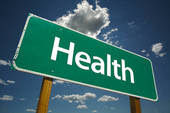 From sweet 16 to fabulous 40 and beyond, acne is a condition that affects almost everyone at some time in their lives. According to the National Institutes of Health, nearly 85 percent of adolescents and young adults between the ages of 12 and 24 develop the condition, and some people continue to be affected into their forties and fifties.
From sweet 16 to fabulous 40 and beyond, acne is a condition that affects almost everyone at some time in their lives. According to the National Institutes of Health, nearly 85 percent of adolescents and young adults between the ages of 12 and 24 develop the condition, and some people continue to be affected into their forties and fifties. “It’s important to remember that acne has both internal and external causes,” says Amy Baker, founder of Nature’s Cure, an innovative health and beauty products company. “However, there are some basic precautions you can take to help prevent breakouts.”
Here are some tips from Baker for people of any age who want to keep their skin clear:
Don’t pick, pop or squeeze, or otherwise mess with your skin. Squeezing blemishes or whiteheads can lead to infection or scarring. It almost always makes the acne you have worse.
Wash your pillowcase often and always use clean face towels. Dirty towels and pillowcases can harbor bacteria and germs that can make acne worse.
Be sure to pull your hair away from your skin when you sleep.
Try to shower as soon as possible after your workout since sweat combined with skin oils can trap dirt and bacteria in your pores.
Don’t go to bed with makeup on. It can clog your pores and lead to breakouts.
Make sure to clean cosmetic brushes regularly in soapy water and throw out old, contaminated makeup.
Use topical treatments, such as Nature's Cure Vanishing Cream, anywhere that you tend to get breakouts -- don't just spot-treat existing pimples. The pore-clogging process happens two to three weeks before any blemish becomes visible on the skin.
For a more complete treatment option, there is an innovative over-the-counter remedy called Nature’s Cure. “Because acne is caused by a combination of factors, including internal triggers that can cause imbalances inside the body, and an overproduction of oil and trapped bacteria on the outside, the most effective way to treat it is by addressing both areas,” explains Baker. “The treatment includes all natural tablets to rebalance the body, and a cream that works to clear up existing pimples at the same time,” she adds.
Exercising regularly can help reduce stress and it increases blood circulation and oxygen penetration to the skin, which may help to prevent acne.
Drink at least 64 ounces of water a day to help "detoxify" the body from the inside out.
By taking these simple precautions, most people can reduce the occurrence of acne. There are also a variety of products available to help in healing or preventing breakouts. However, consumers should be careful about what they choose to use.
“Most acne prevention products either don’t work very well or have a litany of side effects,” says Baker. “Unlike other options, Nature’s Cure is a homeopathic treatment that is made from minerals, herbs and other natural extracts that activate the body’s natural defenses. Because these ingredients are in minute concentrations, they trigger the body to heal itself without side effects.” The formula is available in a male and female version. “Male and female bodies and hormonal compositions are different, and you have to address those differences when you are treating acne,” says Baker.
Nature’s Cure also offers a two-part body acne treatment that includes tablets and a medicated body spray that can be sprayed from any angle to treat hard-to-reach places like the back and neck.
(Source: www.mamashealth.com)












